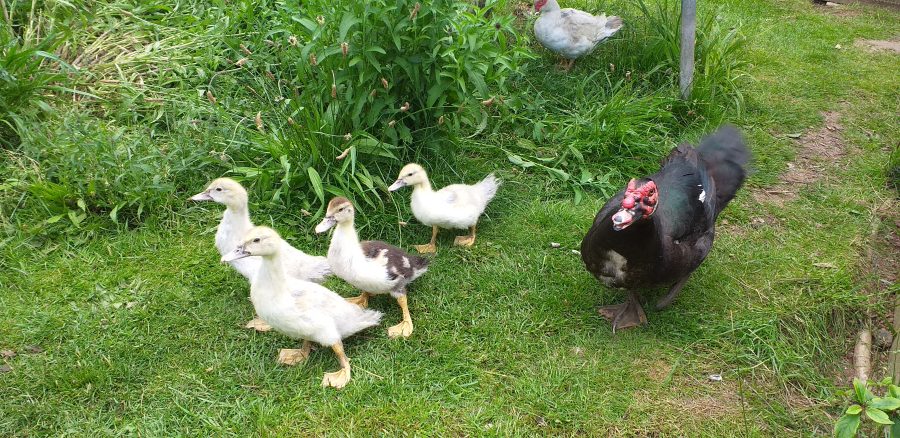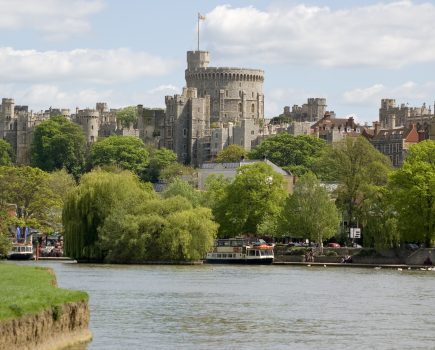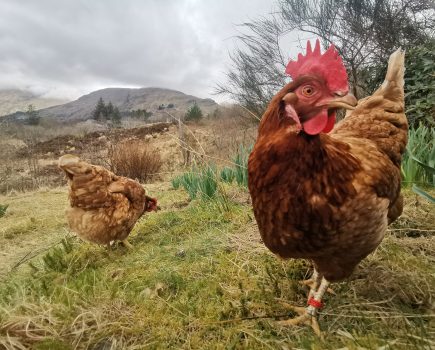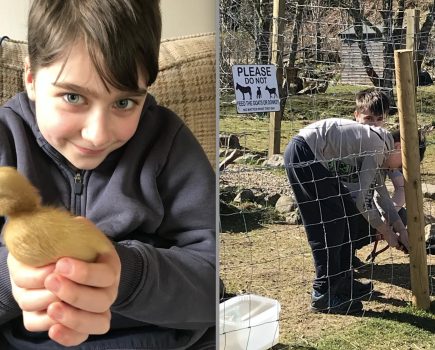Wade Muggleton puts the case for keeping the Muscovy duck, the most, distinctive, versatile, but also divisive of waterfowl…
Introducing the Marmite of ducks. Of course it is the Muscovy and people seem to either love or hate them. There is definitely a case of two opposing camps, those of us who keep them and really love them and the others who would never have them in their poultry collection.
Are they even ducks? This often seems to be an opening point of contention. Whilst we call them Muscovy ducks, they are actually a South American waterfowl Cairina moschata, which have a body like a duck, behave like geese, hiss rather than quack, have a breast like a turkey and will roost like chickens. Historically they were placed in a group known as Perching Ducks. All of which rather proves how the classification of animals is very much a human construct rather than something nature conforms to. The Muscovy cares not a quack whether we think they are ducks, geese or something in between.
A FRIENDLY DUCK – DON’T MIND THE HISSING!
As domestic fowl they are friendly ducks and thoroughly pleasant to have in the garden or around the small holding.
The fact they do not quack makes them great for domestic gardens, I kept them for several years with my neighbours completely unaware we even had ducks.
They will often wag their tails and bob their heads when they are excited to see you or anticipating food. The small noises they do make are more hisses and huffs and no they don’t quack at all, but do not think they are hissing at you out of fear or anger; it is simply their way of expressing themselves.
In their native South America, the Muscovy represents the cycle of birth and death, luck, and hope. It’s also considered a symbol of purity, motherhood, and innocence. Eastern cultures consider the Muscovy duck a symbol of good health, healing, luck, and prosperity. We just like having them around but if any of the above is also true then great!
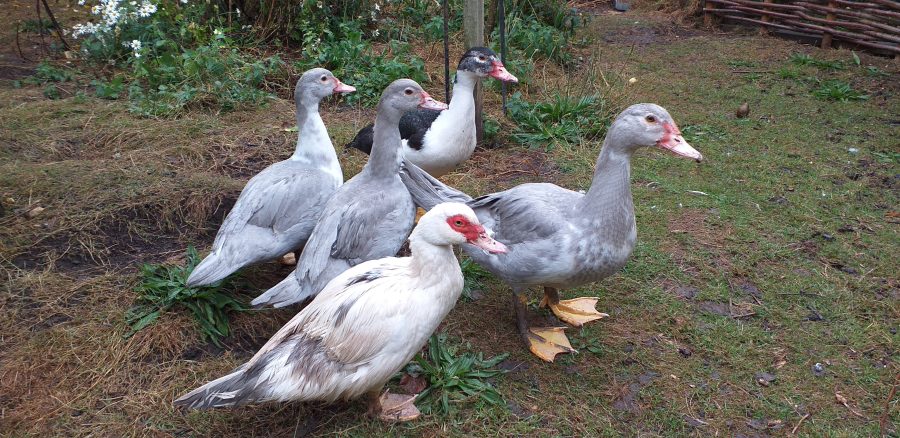
They are friendly and have a distinct personality. In my view they have way more character than any other poultry we have ever kept. They don’t like being picked up and petted, but they still seem to enjoy some human company and are good with children. They are non-aggressive, except for the mating and rearing season when they can become protective and somewhat territorial. The drakes can be slightly intimidating in the breeding season but nearly always back down in a confrontation with humans, it’s all a lot of bravado by pumped up drakes.
THE MUSCOVY IS PRIZED AS A BROODY
They dedicatedly sit tight for the 35 days that the eggs will take to hatch, a full week longer than other breeds of duck, another characteristic that sets them apart from other ducks. They are excellent and attentive mothers minding and brooding their ducklings. If allowed to do so, they will sit three times a year, being used by some duck keepers as broodies for hatching a range of other breeds. We once hand reared the runt of a brood who hatched late, got stood on by one of the adults and nearly died. After we had saved its life the mother rejected it, so we had a completely imprinted Muscovy duckling as a pet, he went everywhere with us and grew into a huge drake with no fear of humans. For a while he was a minor poultry celebrity featuring in school ‘show and tell’ visits and we ended up being known locally as ‘the people with the pet duck’.
“The Muscovy cares not a quack whether we think they are ducks or geese”
They will not lay anything like the volume of say, Khaki Campbells, but young stock will lay reasonably and produce hard-shelled white eggs with huge yolks that eat really well. Like other duck eggs they are much prized in baking. Muscovys can be long-lived ducks, up to twenty years in some cases, but their laying diminishes with the passing of the years. Just as they are long-lived they are also slow to mature and sex, despite claims that from four weeks it is possible to discern males from females, in our experience it can be ten to twelve weeks of pondering before the normally slightly larger males develop their far more pronounced facial features.
UGLY OR BEAUTIFUL, IT’S IN THE EYE OF THE BEHOLDER…
They have an erectile fore-crown crest, and both sexes have red bare facial patches, which are characterised by the wart-like ‘caruncles’ which develop as they age and become especially prominent in the drakes. This is the part that some people claim makes them ugly. To others of us, it’s endearing. It is certainly a feature that sets them apart from other duck species and most geese. The drakes can weigh from 4.5 to 6.3 kg (10-14 lbs) and the duck 2.3 to 3.2 kg (5-7 lbs).
As such they are heavy-bodied birds with relatively short legs that give them a horizontal carriage set against the more upright posture of geese. The domesticated Muscovy duck is, it is claimed, the only breed of duck that is not descended from the wild Mallard.
Whilst the wild South American forms vary slightly in appearance, they remain largely on the dark side, colour wise. Domestic breeding has produced a range of standardised colour forms. In the UK these are classed as Wild (Black), Blue, Chocolate, Lavender, White, Black Magpie, Blue Magpie, Chocolate Magpie, Lavender Magpie and are shown and exhibited according to such categorisation.
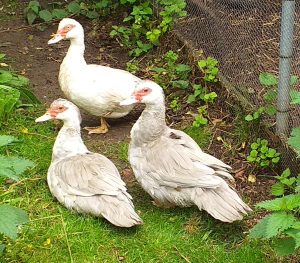
FOX-PROOF ACCOMMODATION
Accommodation-wise, mine have a small shed with a similar sized fox-proof run where they have to stay when we are out and during the avian flu restriction periods. When I am home and the rules allow, they have access to the lower half of the garden free roaming.
We have kept chickens of multiple breeds and three or four breeds of duck, and for me, the Muscovy is the most characterful and pleasant breed of poultry to have around. In late Summer, Autumn, and Winter I allow mine free roam of the vegetable garden to clear up left over plant residue and hopefully reduce the slug and snail population. Because unlike chickens they don’t scratch, their impact on the garden is minimal, apart from accidentally stepping on small seedlings they have no negative impacts on my vegetable plot. They do have an inquisitive nature and will hang around when I am working in the garden, admittedly in the expectation of getting something, certainly any slugs or snails I find and toss in their direction are instantly devoured.
They are true characters and my Muscovy’s never cease to make me smile when I am in the garden.
More content like this can be found in The Country Smallholder magazine. Subscribe here.
For FREE updates from the world of smallholding, sign up for The Country Smallholder newsletter here.

